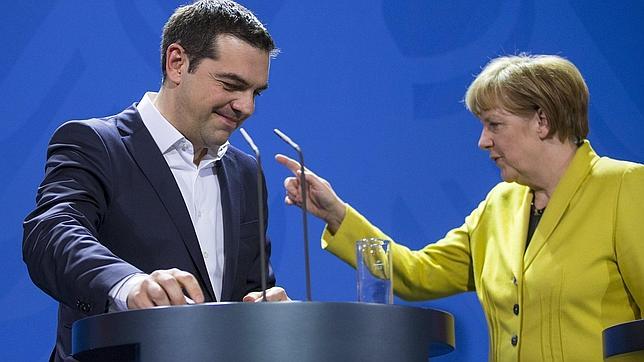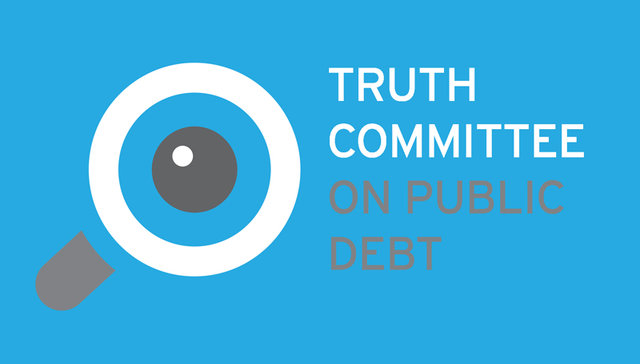Greek debt crises: The European Stability Mechanism money started flowing – to creditors, not to Greece
8 September by Bodo Ellmers
The Greek bailout saga entered a new round as the first tranches of the new loan package were disbursed. The €86 billion programme will be funded by the European Stability Mechanism (ESM). The International Monetary Fund (IMF) refused to participate in the arrangements, due to doubts that the Eurogroup-negotiated programme is sustainable without a substantial reduction in the existing debt stock. For good reasons: the money will be used to refinance Greece’s unsustainable debt burden, and to recapitalise banks. While creditors can rest easy for a while, the Greek citizens and economy are once again sidelined.
Europe’s current finance ministers and heads of state should be relieved: The new ESM bailout package should delay Greece’s default and insolvency for a few years. Hopefully until their watch is over, and successors have to take the blame for writing off the many billions of taxpayer-guaranteed loans that will ultimately have to happen.
Where does all the money go?
On 20 August, the ESM money started to flow, after approval by several parliaments in the preceding days. However, the money did not go to Greece but to banks and creditors:
This is how the €86 billion from the third programme is expected to be used:
- €54 billion to refinance old debts
- €25 billion to recapitalise banks
- €15 billion to clear payment arrears and rebuild reserves
The €8 billion gap between this €94 billion bailout package for Greece’s creditors and banks, and the €86 billion that the ESM might provide, is supposed to be funded by the Greek state: €2 billion from the regular budget and €6 billion from privatisation proceeds. This means that the programme is not only failing to finance economic recovery in Greece, the Greek contribution implies that more money is drained from the economy and public budgets in order to be transferred to creditors.
Entering the age of circular multi-level bailouts
A first payment of €13 billion was made on 20 August. €3.4 billion of this was used to repay the European Central Bank (ECB) (€3.2 billion principal plus €200 million in interest). The fact that the ESM started bailing out the ECB is a new quality and a Kafkaesque example of how EU institutions are playing ping-pong with fictitious money. And it is good business for the ECB and the states that own it too: the Committee for the Abolition of Third World Debt (CADTM) has published an excellent analysis explaining how the ECB made vulture-like profits on their Greek engagement.
The rest of the money will mainly be used to repay the EU’s €7.4 billion bridging loan that Greece has used to pay installments due to the IMF. I have argued before thatit would have been useful for IMF reform if Greece had defaulted on the IMF loans. This ESM-funded IMF bailout is also a new feature: Usually it is the IMF’s job to provide bailout loans when one of its members is short of cash, which it did overly generously in the case of Greece in previous years. Money that Greek governments – pushed by the Troika – primarily used to bail out private creditors and failed banks.
We have obviously entered the age of circular multi-level bailouts. It would be interesting to know if the IMF and ECB boards already had discussions about which of them will step in once the ESM is in trouble, which will sooner or later happen if the ESM continues to (re-)finance insolvent states.
Of the next ESM payment of €13 billion that is to be disbursed soon, the lion’s share (€10 billion) will be transferred to a blocked account in Luxemburg that is managed by the ESM, outside the control of democratic authorities. The payment is earmarked for the bank recapitalisation, i.e. bailout. This lack of democratic control has been criticised by Eurodad’s recent comments on the new programme’s onerous set of conditions. Eurodad member Global Justice Now has also released a blog on the crazy privatisation programme, and has included a list of assets that are due to be privatised. It is highly unlikely, however, that a new round of firesale privatisations will generate enough resources to bring Greece anywhere near sustainable debt levels, this is what insolvency is about.
So it comes down once again to a mixture of bank bailout programme and delayed filing of insolvency, i.e. new lending to refinance unsustainable old debts, rather than writing debts off once and for all. If Greece was a private cooperation, such a conscious delay would be a punishable crime. It demonstrates the EU needs a fair and orderly insolvency framework to come to a sustainable solution to the crisis.
Source : Eurodad


